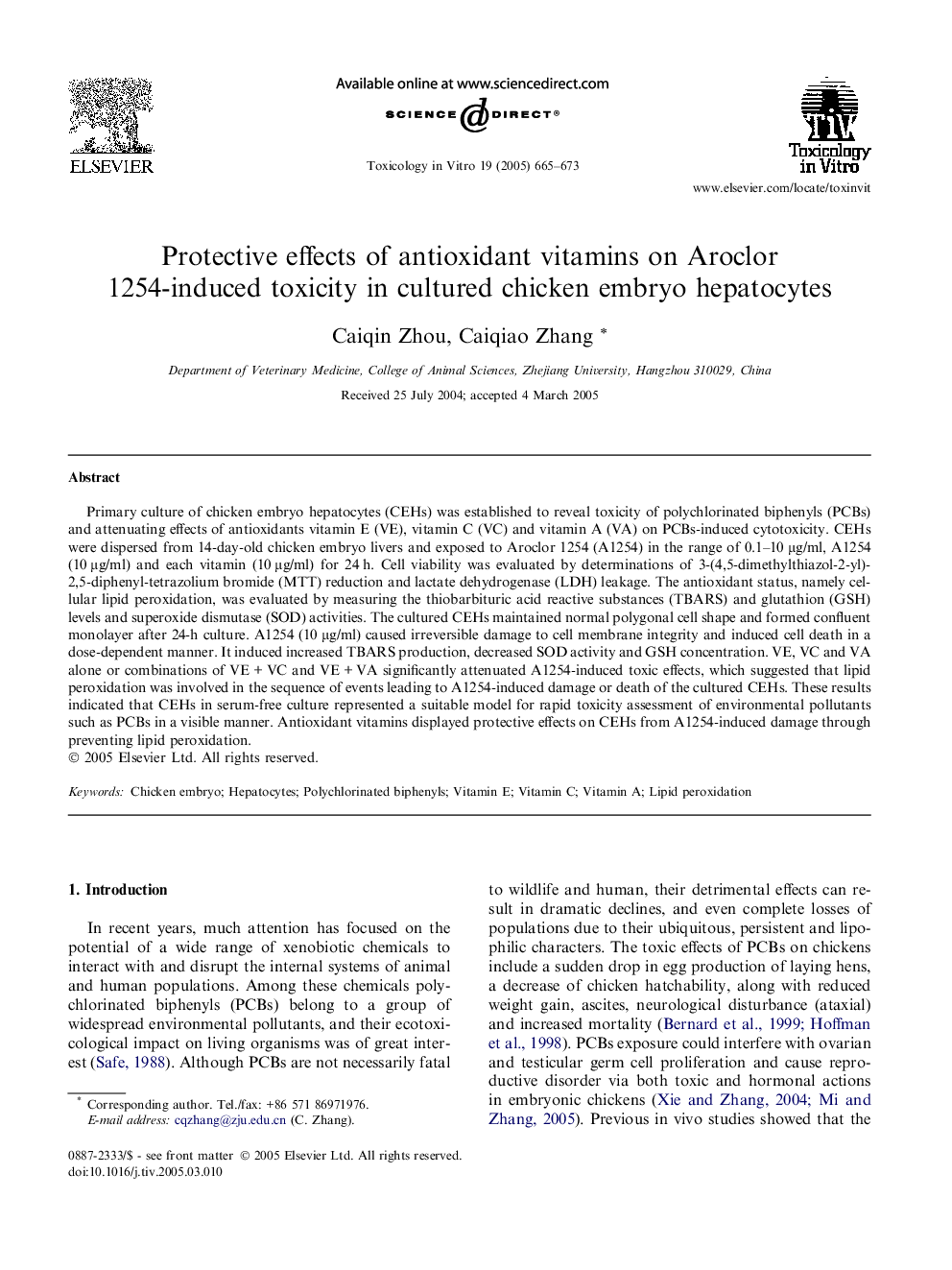| Article ID | Journal | Published Year | Pages | File Type |
|---|---|---|---|---|
| 9038429 | Toxicology in Vitro | 2005 | 9 Pages |
Abstract
Primary culture of chicken embryo hepatocytes (CEHs) was established to reveal toxicity of polychlorinated biphenyls (PCBs) and attenuating effects of antioxidants vitamin E (VE), vitamin C (VC) and vitamin A (VA) on PCBs-induced cytotoxicity. CEHs were dispersed from 14-day-old chicken embryo livers and exposed to Aroclor 1254 (A1254) in the range of 0.1-10 μg/ml, A1254 (10 μg/ml) and each vitamin (10 μg/ml) for 24 h. Cell viability was evaluated by determinations of 3-(4,5-dimethylthiazol-2-yl)-2,5-diphenyl-tetrazolium bromide (MTT) reduction and lactate dehydrogenase (LDH) leakage. The antioxidant status, namely cellular lipid peroxidation, was evaluated by measuring the thiobarbituric acid reactive substances (TBARS) and glutathion (GSH) levels and superoxide dismutase (SOD) activities. The cultured CEHs maintained normal polygonal cell shape and formed confluent monolayer after 24-h culture. A1254 (10 μg/ml) caused irreversible damage to cell membrane integrity and induced cell death in a dose-dependent manner. It induced increased TBARS production, decreased SOD activity and GSH concentration. VE, VC and VA alone or combinations of VE + VC and VE + VA significantly attenuated A1254-induced toxic effects, which suggested that lipid peroxidation was involved in the sequence of events leading to A1254-induced damage or death of the cultured CEHs. These results indicated that CEHs in serum-free culture represented a suitable model for rapid toxicity assessment of environmental pollutants such as PCBs in a visible manner. Antioxidant vitamins displayed protective effects on CEHs from A1254-induced damage through preventing lipid peroxidation.
Keywords
Related Topics
Life Sciences
Environmental Science
Health, Toxicology and Mutagenesis
Authors
Caiqin Zhou, Caiqiao Zhang,
